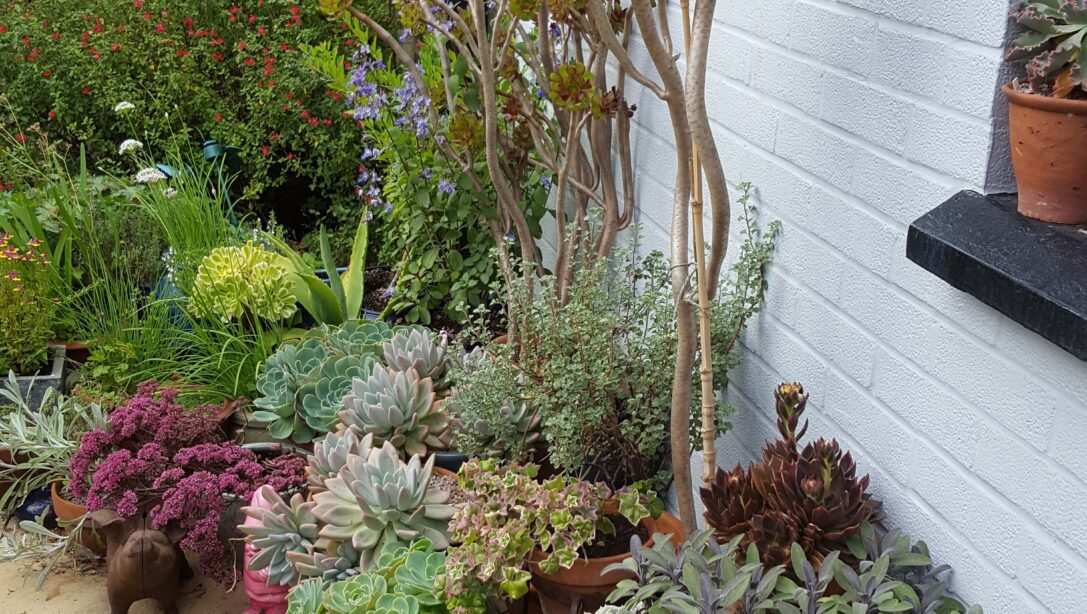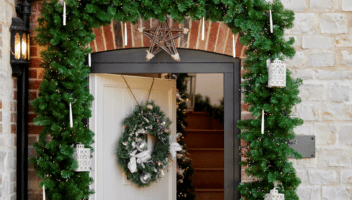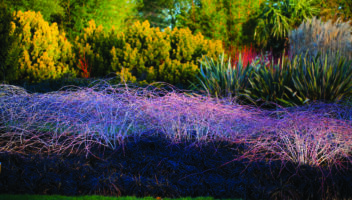With urban and suburban gardens getting smaller all the time, many of us perhaps don’t have as much space in our gardens we would like. But a smaller space doesn’t have to mean less impact, with some smart planning and good plant choices, your small plot can give you just as much pleasure as the rolling acres of your dreams. This article will support you with your gardening in small spaces and how you can extract the fullest potential.
Planning Smaller Borders
For those who like gardening and have small spaces, you can still at least have some opportunity to create attractive borders, choosing the right size plants that create the illusion of more space is key.
Extending the Small Space
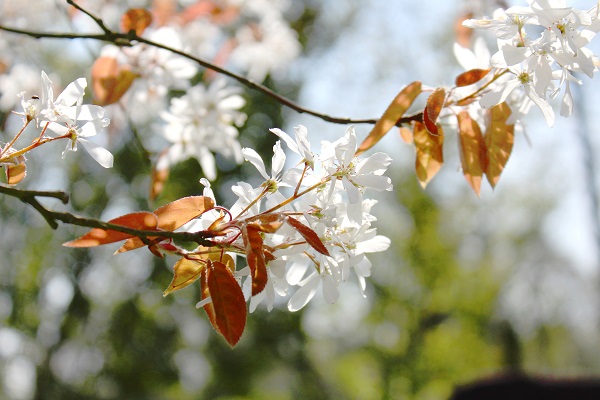
The eye-catching flowers of Amelanchier lamarckii
A key point in making a small garden look bigger is to draw the eye upwards with taller planting. Paradoxically, this means one of the most important elements in a smaller garden is trees.
There are a number of trees that are ideal for smaller plots. The important thing is to add height without blocking out the sun (or your view) so tall, slim trees (‘fastigiate’) or small to mid-sized trees with light foliage cover giving a dappled shade are a good choice.
Gardening in small spaces can leave you with less room for plants and those plants you do have need to do something for you for a long period during the year.
Here are some popular choices!
Amelanchier lamarckii
A small, attractive tree smothered in white blossom in spring with red-purple berries following in June (hence the common name ‘Juneberry’). These berries are loved by birds, so this is a great choice if you want to create a wildlife haven. Then in autumn the foliage turns glorious shades of orange and red.
Malus ‘Evereste’
This is one of the best flowering crab apples with an upright habit, lovely spring blooms, good autumn colour and the added bonus of good-sized fruits you can use to make jams and jellies.
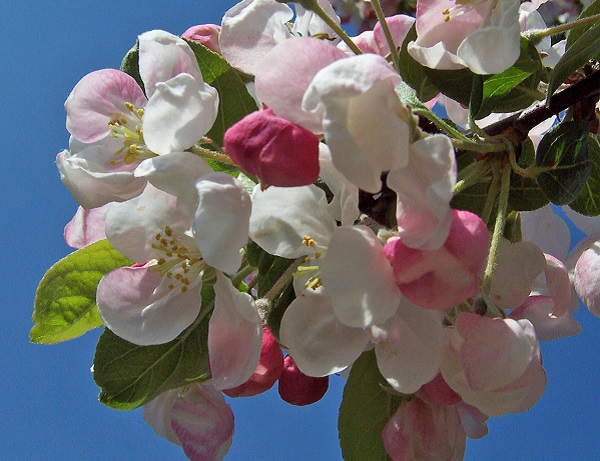
Acer griseum
Although ultimately bigger than some of the other selections here, Acer griseum is very slow growing and straightforward to keep to size. The main attraction here is the stunning peeling bark in autumn and winter, along with attractive foliage in the spring and summer which colours up nicely in the autumn.
Crataegus persimilis ‘Prunifolia’
Hawthorns are often overlooked as being a hedgerow plant but as a standalone tree they can be quite stunning in spring flower and autumn berry and foliage. C. ‘Prunifolia’ does have a slightly wider spread than some others here, but again is slow growing and reasonably easy to keep under control.
Sorbus aucuparia
Best known as Rowan or Mountain Ash, most varieties are slim and upright of habit which are perfect for the small space garden. The berries are attractive to look at, great for the birds and for the more adventurous can be used to make jellies in the same way as crab apples.
Betula pendula ‘Fastigiata’
The upright Silver Birch needs little more description – we all know it so well. The dappled shade provided by its small leaves won’t dominate the small garden but the tree will lend an important sense of scale.
Eye-Level Planting
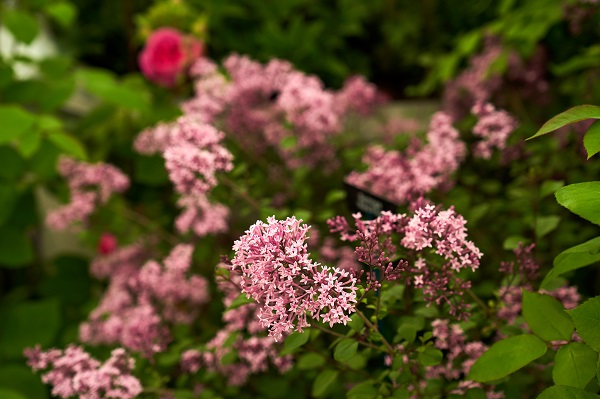
Syringa ‘Red Pixie’, a smaller form of lilac
If you are planting trees, you need to link the height of your trees back down to your beds and borders. This is where choosing the right shrubs come in. These create structure around which the colourful perennials can flourish and excite.
Camellia
Camellias can be a good choice as a structural shrub – the glossy dark green foliage is a great background for colourful perennials in the spring and summer. As they die back the Camellia bursts into flower in the winter months. With a wide range of flower colours to choose from you can easily plan to keep an all-year-round colour scheme or cleverly shift from one to another as the seasons change.
These plants do best in acid (or ericaceous) soils, as do Rhododendrons, Azaleas and Acers. If your soil is neutral or alkaline, digging in lots of natural material like composted manure and leaf mould will help turn things around. However, if your soil is very alkaline the plants will unfortunately die. Feed with ericaceous fertiliser with added iron, which is an important trace element that helps the roots take up other important nutrients.
Acer palmatum (Japanese Maples)
These are staples of the small plot. Slow-growing and easily managed, they will eventually become small trees, but can easily be kept as large shrubs to around 8-10 feet in height. Prune back to shape in early spring as the sap starts to rise if necessary, otherwise just trim out any dead or diseased branches apparent after the winter.
Some varieties have a more upright habit while some, such as Acer p. ‘Dissectum’ and Acer p. ‘Crimson Queen’ have a more weeping growth and will form attractive mounded shrubs. Most of these types of Acer will offer you something in each season – colourful new shoots in the spring, crisp summer foliage often turning fiery shades in the autumn and most have striking colourful stems through the winter.
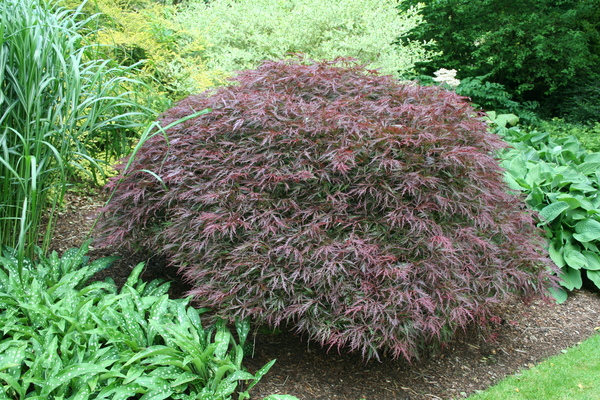
Acer palmatum ‘Crimson Queen’
Roses
Roses work so well with perennials and there are a huge number of varieties that are great for smaller spaces. Choose older Hybrid Tea types rather than the modern English varieties and you will discover far greater disease and pest resistance.
Keep them well fed and watered and they will have the best chance of fighting off black spot and infestations of aphids by themselves. If greenfly and blackfly do become a problem, a product like Roseclear is simple to use and effective – the new formulation is neonicotinoid free and harmless to bees and other pollinators. If you like to garden completely chemical free, try spraying on a solution of water and washing up liquid.
Lilac
Lilacs work well as structural plants within perennial planting. The traditional Syringa vulgaris types are too big for the smaller garden but varieties such as Syringa ‘Red Pixie’, S. ‘Palibin’ and S. ‘Pink Perfume’ grow to only 4-5 feet high.
Daphne
Another great choice for any garden with stunning white-pink flowers in early spring and an incredible scent. Make sure this is planted somewhere near the back door so you can enjoy it.
Ground Level
The key to increasing the apparent space of the garden is to keep the eye interested vertically. You need a range of heights in your perennial planting or it will look flat.
In order to plant at different heights, you do need a good depth of flower border to work with. Aim for at least three feet if not four feet of depth to plant in. If that means only having borders down one side of the garden then why not. In fact, it might be time to consider whether you even need a lawn at all – why not design deep borders for planting with paved or natural pathways through to the rear?
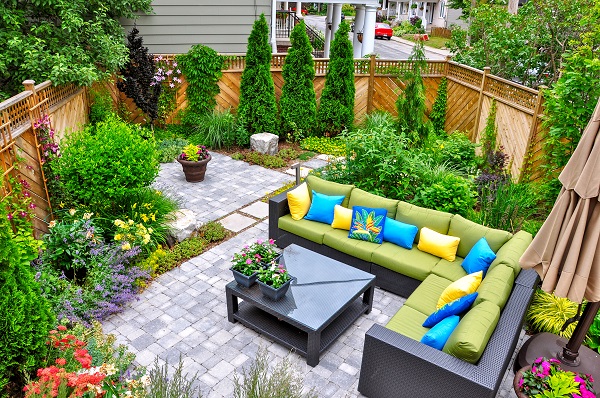
A small, urban garden favouring vibrant plant and furniture colour over lawn space
If you are looking to give your garden a design feel we suggest dotting them around the garden, this is more recently popular with gardeners.
There are far too many great perennial plants to list, but a few particularly good ones are:
| TALLER PERENNIALS for the back of the border | MID-HEIGHT PERENNIALS for the middle of the border | LOW-GROWING OR GROUND COVER PERENNIALS for the front of the border |
|---|---|---|
| Agapanthus | Achillea | Aster |
| Alcea – Hollyhocks | Aquilegia – Granny’s Bonnet | Alpines such as Helianthemum, Rhodanthemum, Phlox subulata and Litherodora |
| Alliums (also good further forward to pop up through other planting) | Astibe (but needs moist soil to thrive) | Bergenia (Harzkristall and Overture are good pink-flowered varieties) |
| Cirsium | Astrantia | Brunnera (great for a shadier spot) |
| Crocosmia ‘Lucifer’ | Catananche – Cupid’s Dart | Campanula |
| Delphiniums | Coreopsis | Dianthus |
| Digitalis | Cosmos Chocamocha | Edpimedium |
| Gladioli | Crocosmia “Emily McKenzie”, “Carmin Brilliant”, “George Davison” | Erysimum (Perennial Wallflower) |
| Helenium | Dahlia | Gaillardia |
| Iris sibirica | Echinacea | Gaura varieties (Rosy Jane and Papillon among others) |
| Lobelia – perennial varieties such as Queen Victoria and Starship Deep Scarlet | Geum (‘Totally Tangerine’ is a favourite at Chelsea) | Geranium (‘Johnson’s Blue’ and ‘Mavis Simpson’ are well known and ‘Rozanne’ was voted ‘Plant of the Millenium’) |
| Lupins – West Country lupins flower all summer long if you keep deadheading | Hosta (some varieties are smaller so better planted further forwards) | Heuchera and Tiarella |
| Paeonies – “Bowl of Beauty” an “Sarah Bernhardt” are classic favourites | Leucanthemum varieties – these are quickly clump-forming and can be divided every two to three years. | Nemesia – some are not very hardy and should be treated as bedding |
| Phlox paniculata | Monards | Nepeta (Catmint) |
| Vervena bonariensis and Verbena “Bamptom” | Penstemon | Primula |
| Verbascum | Polemonium | Scabiosa |
| Veronicastrum | Salvia | Sedum |
| Zantedeschia | Veronica | |
Clever Colour when gardening for Small Spaces
When gardening in small spaces it is important to have a theme for an area and try to stick to it, this could be a colour or colour combination such as fiery red/orange/yellow, or cool blue, purple and pink. Contrasting colours can work well together as well – white, purple and yellow is a vibrant combination that works well while blue and orange can be striking if done well.
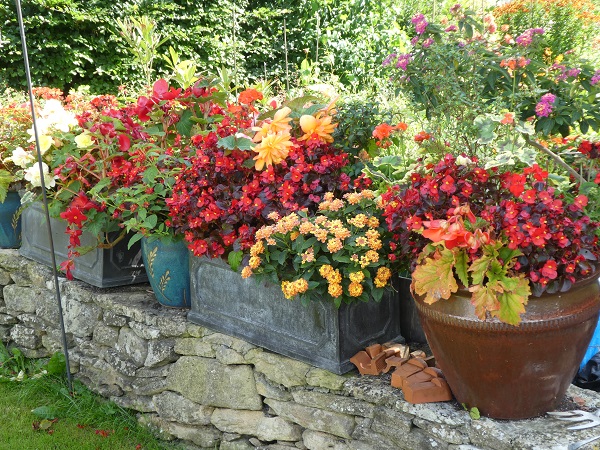
Fiery reds, oranges and lime – planted here in pots along a wall
Alternatively, you might choose just a handful of plants, but plant multiples of each to fill the space – purple Geranium Rozanne and Campanula Catherina with white and purple Alliums popping up in early spring and white and purple Agapanthus replacing them in the summer could be a real statement and keeps an area simple but impactful.
Gardening in Pots for Small Spaces
For those whose small space does not even allow the luxury of a border, plants in pots and containers are a natural choice. In fact, planting in pots can enhance any outdoor space, positioned on balconies, patios or around doorways to create attractive entrances.
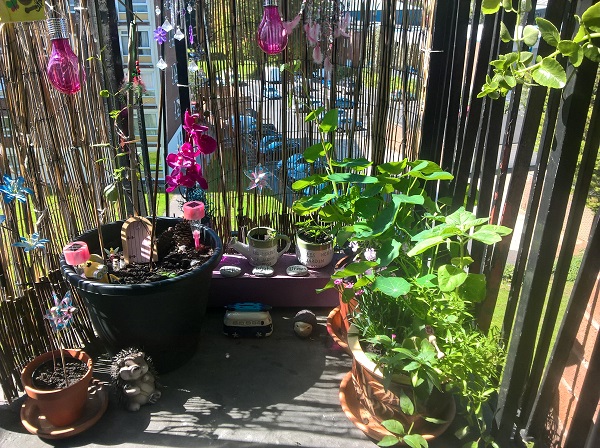
A vibrant balcony garden
The breadth and range of plants that work in a pot is vast. Many of our favourites also feature in our recommended plants for border planting in small gardens.
Trees / shrubs:
Acer palmatum, Camellias, Clematis, Lavandula, Pieris, Pittosporum tenuifolium ‘Golf Ball’, dwarf rhododendron, shrub roses
Perennials:
Agapanthus, spring flowering bulbs (alliums, narcissi, tulips), Cordyline ‘Pink Star’, Penstemon
Grasses:
Festuca glauca ‘Intense Blue’
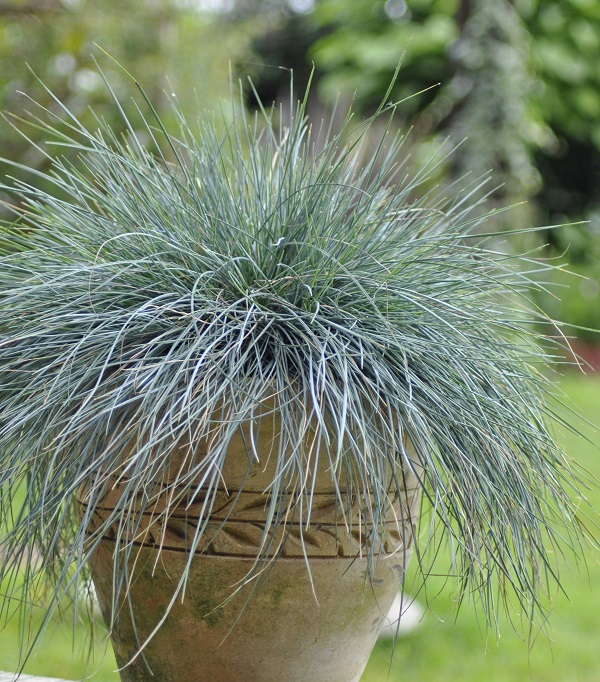
Festuca glauca ‘Intense Blue’ creating a pleasing mophead form in a pot
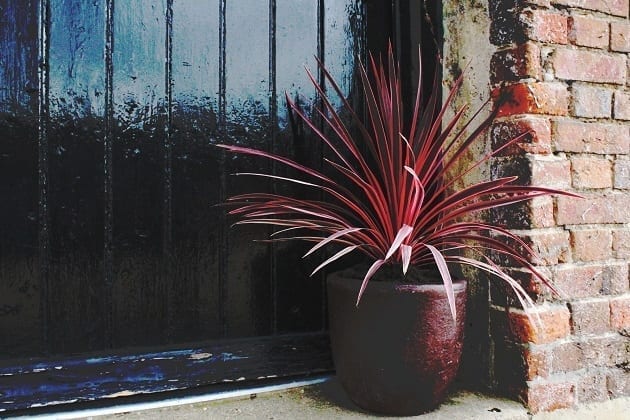
Cordyline ‘Pink Star’, one of our plant introductions at RHS Chelsea Flower Show 2019
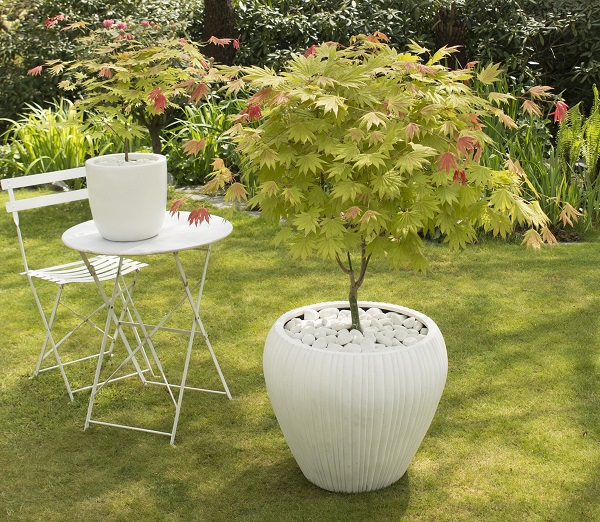
Acer palmatum ‘Moonrise’ complemented by a stylish monochrome pot
Hanging Baskets for Small Spaces
Where floor space is limited, make the most of vertical gardening by planting hanging baskets. Hanging baskets can be filled with anything, from flower to food produce such as tomatoes or strawberries.
Plant hanging baskets for summer colour from April onwards, or, plant in September and October to enjoy colour and interest all through the winter months.
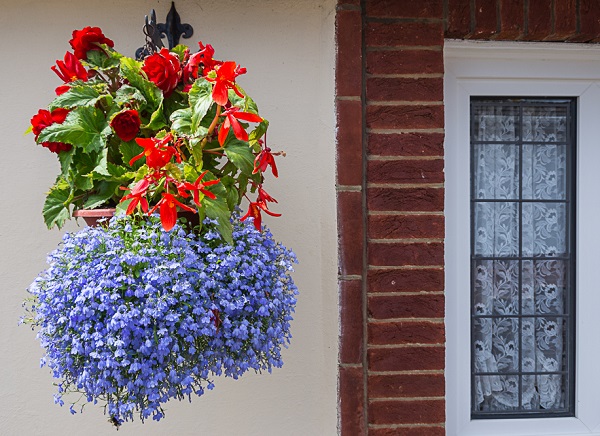
Vibrant colour from hanging baskets
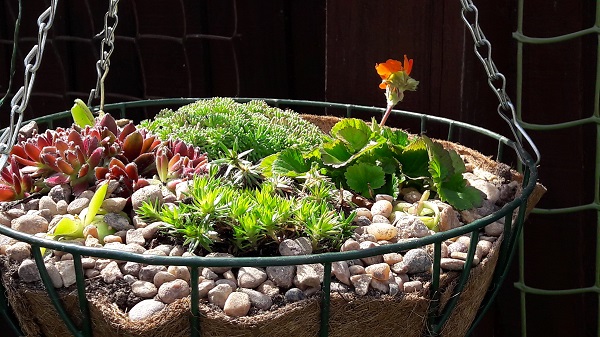
Alpines provide a modern twist on the hanging basket
For inspiration and step-by-step help, read our guide to planting hanging baskets.
Growing Upwards in Small Spaces
The potential of your garden is much greater than it’s floor space so any wall or fence has the opportunity to be brought to life. In small spaces the ability to put gardening of vertical opportunities is an ideal way to bring your plot to life.
There are a huge number of fantastic climbing plants to enjoy all year round, such as Clematis varieties, Hydrangea petiolaris, Ipomoea tricolor (morning glory), Lonicera (honeysuckle), Passiflora and climbing roses.
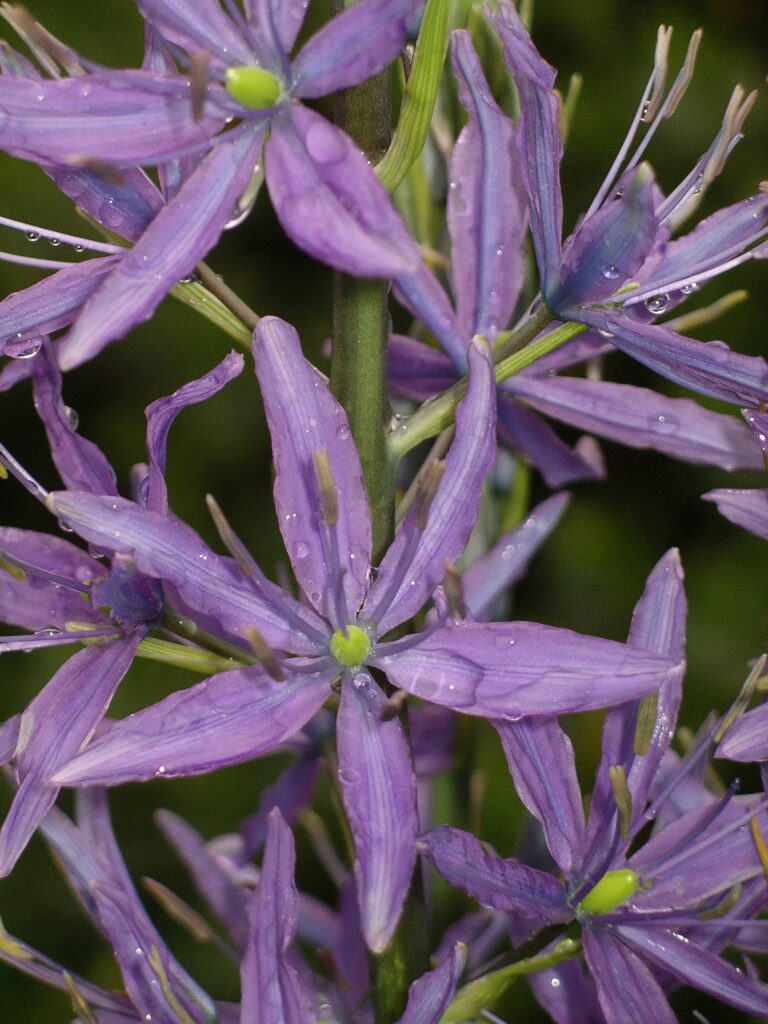
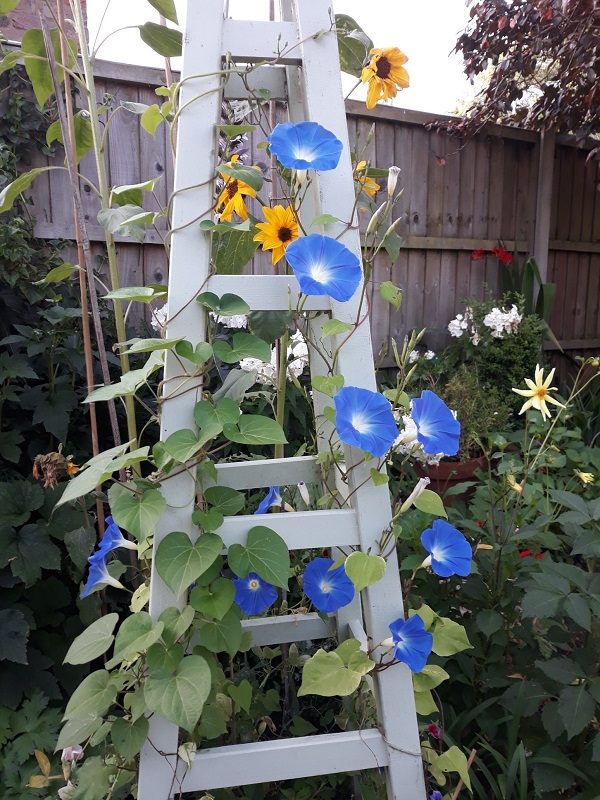
Ipomoea tricolor (morning glory) climbing a wooden obelisk. Photo credit: Twitter user @stephaniemay_16
If your garden is a small space there is no barrier to creating a beautiful, living environment. However, trying to fit every plant you like into a small space can end up looking muddled and messy, so take some time to plan your plot and you will be richly rewarded.
For advice and inspiration for gardening in small spaces, visit your nearest Hillier Garden Centre. Our plant experts are always happy to help.


